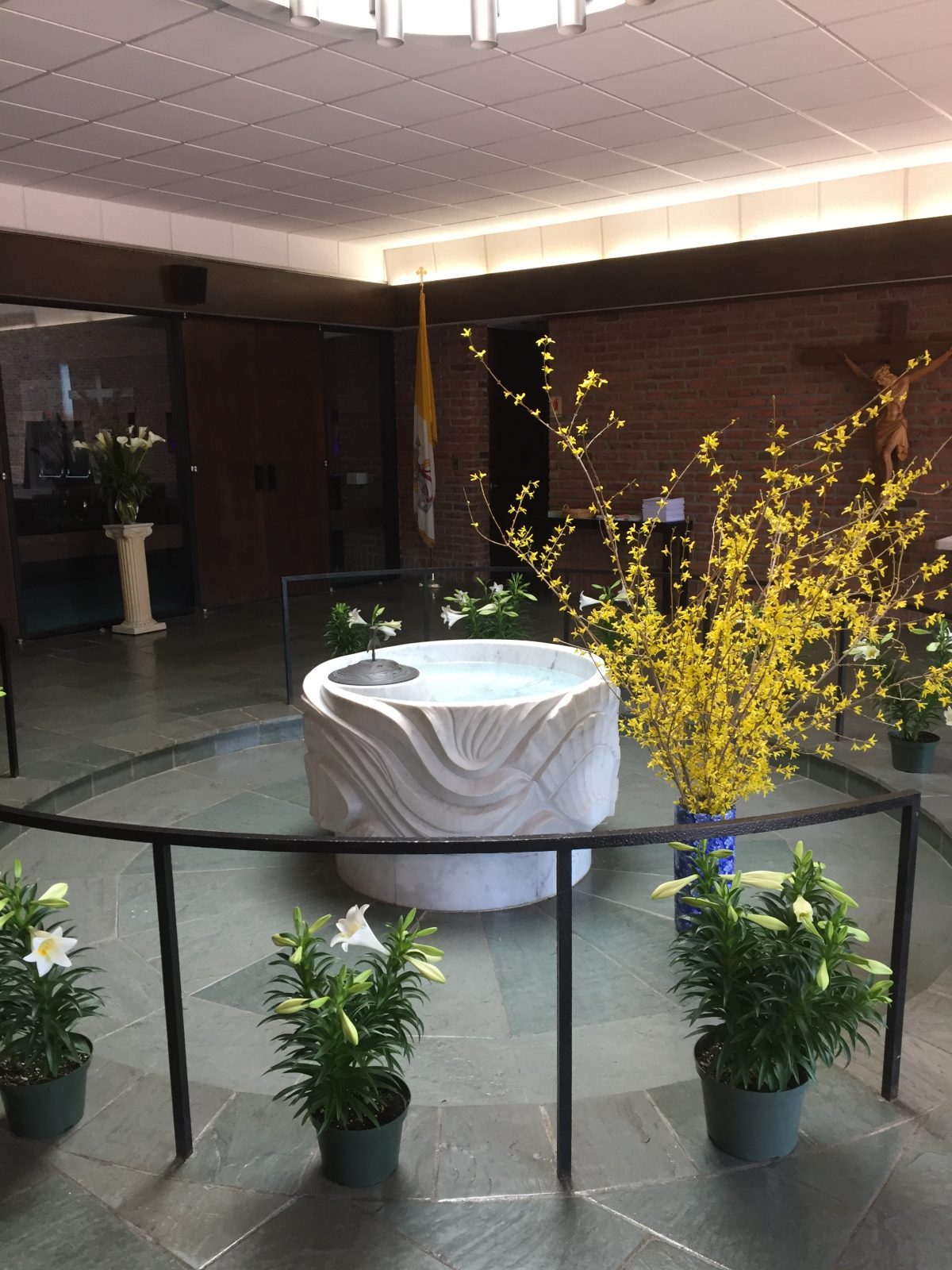Altar

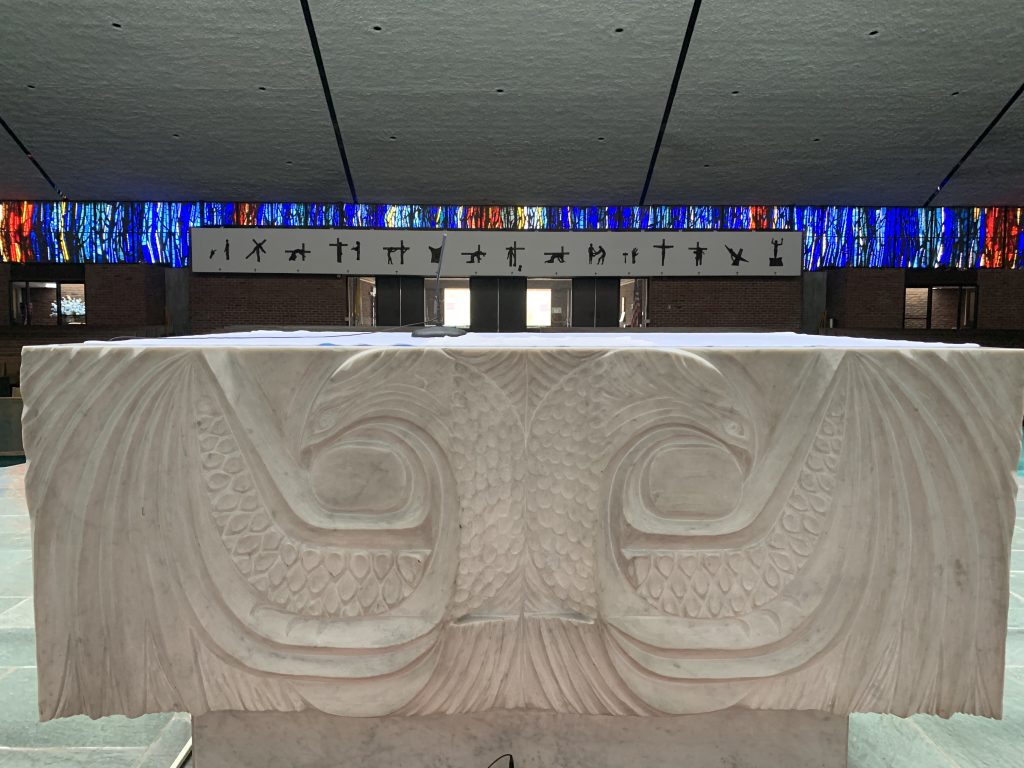
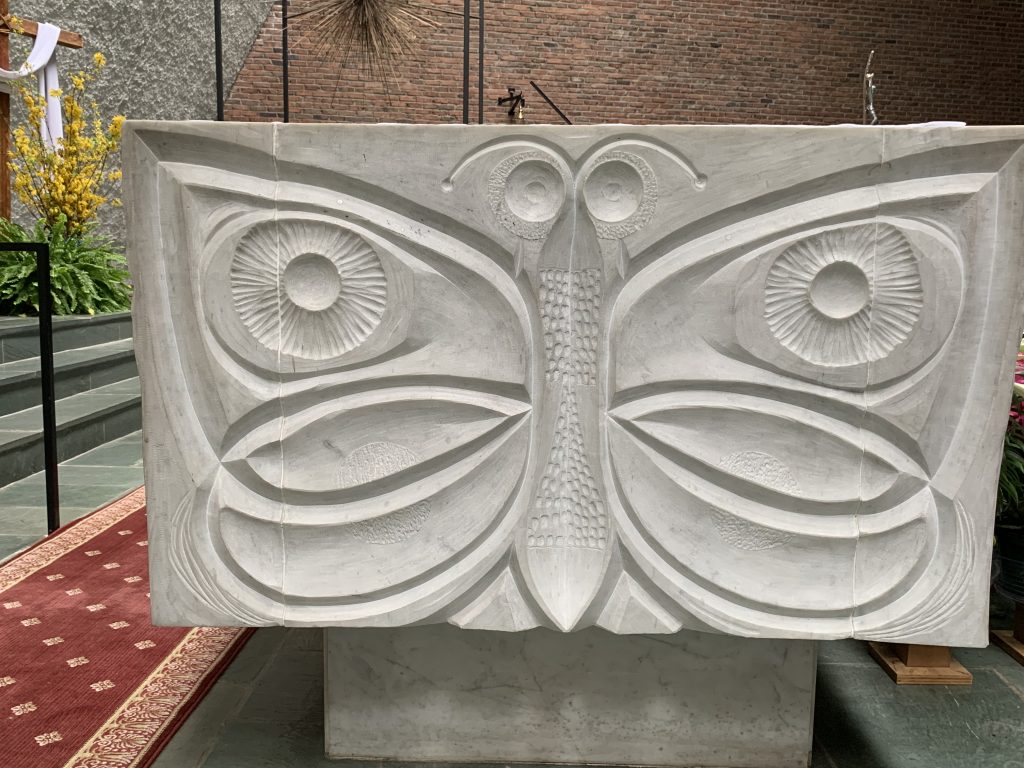
On the front of the Altar a phoenix is depicted. The phoenix is a mythological bird with the legend that after a lifespan of 500 years it would build a nest of aromatic branches and spices; set it on fire and be consumed in the flames. From the ashes would come a new, more perfect phoenix. Christians have adopted this as a symbol of Christ’s Resurrection.
Carved out on both sides of the altar are butterflies. After a time crawling on the earth the caterpillar is entombed in the cocoon and changes to a beautiful butterfly free of all limitations. Christians have also adopted the butterfly as a symbol of the resurrection.
Tabernacle and Sunburst
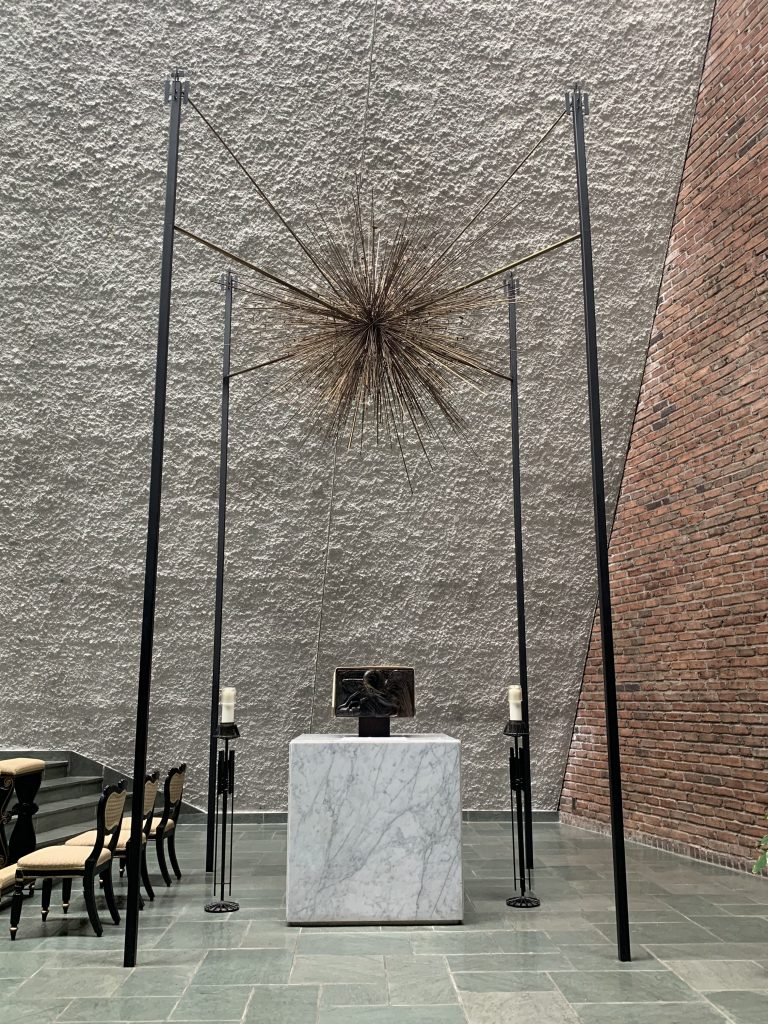
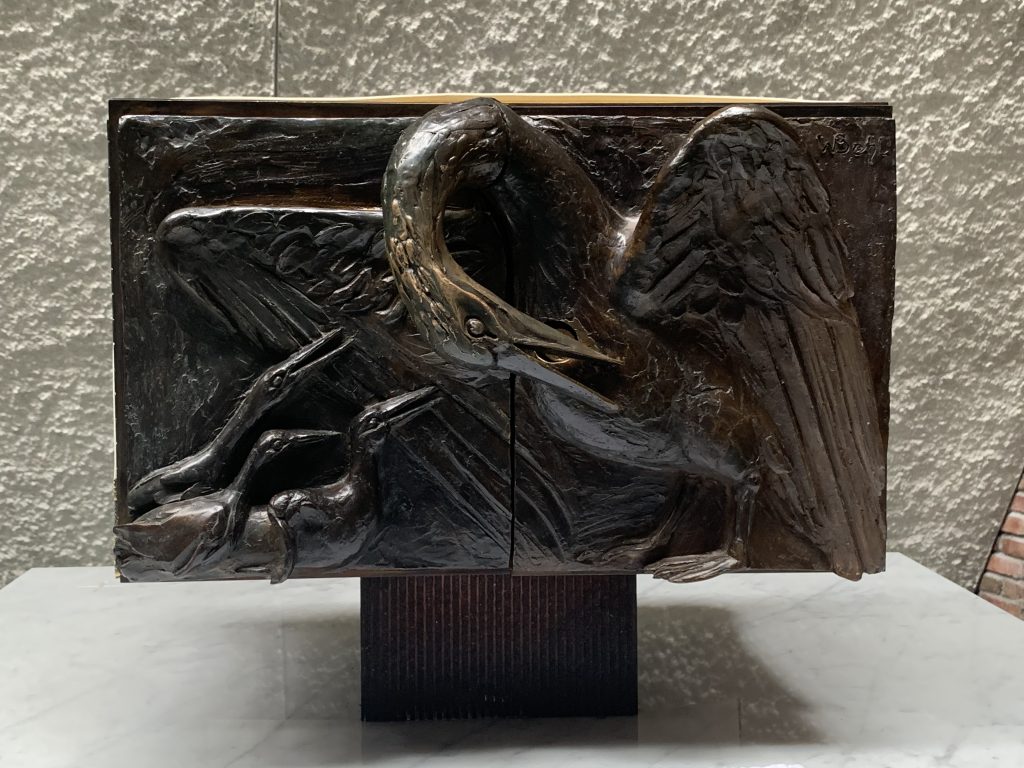
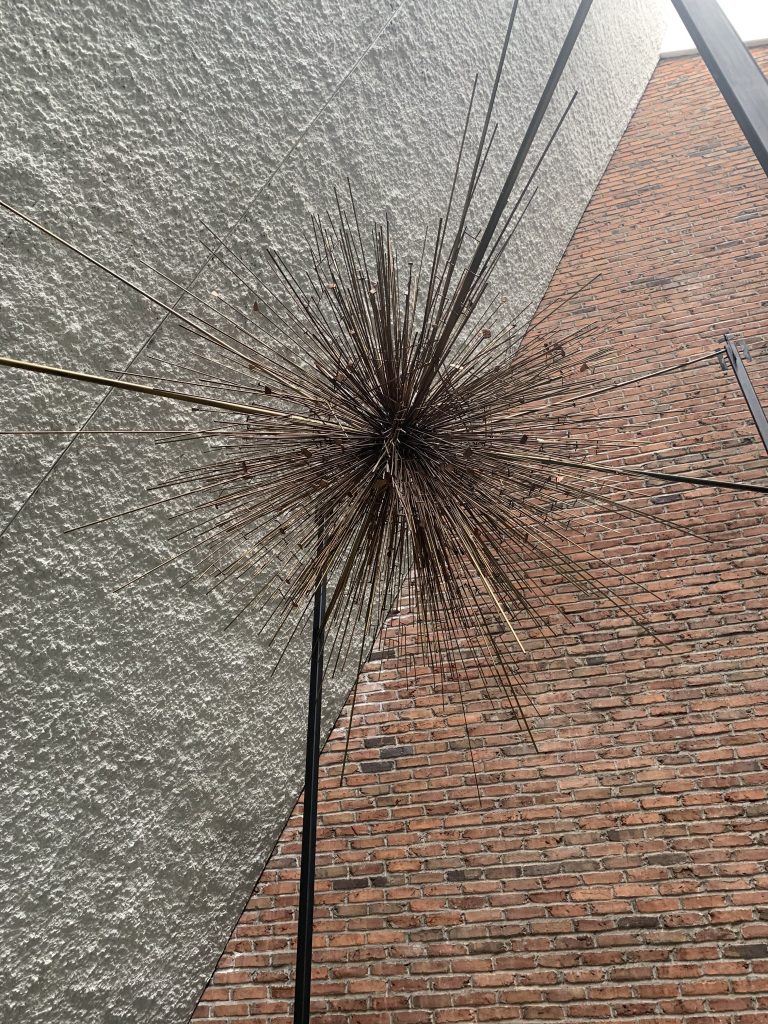
The doors on the tabernacle in our church have a pelican sculpted on them. The pelican is a unique bird, which according to legend would feed its young by pecking and breaking the skin of its own body, allowing for its young to feed on its blood. This bird was chosen for the tabernacle because it represents Jesus who feeds us with His Body and Blood every time we receive Him in Communion.
The Sunburst hangs above the tabernacle for two reasons. The first reason is to remind us that Jesus, who is present in the tabernacle, is the Light of the World. Just as the earth depends on the sun to sustain life, the Christian life depends on Jesus in the Eucharist. The second reason why the Sunburst hangs over the tabernacle is because it is another symbol of the resurrection. “Very early when the sun had risen, on the first day of the week, they came to the tomb…..On entering the tomb they saw a young man sitting on the right side, clothed in a white robe. He said to them, ‘Do not be amazed. You seek Jesus of Nazareth, the crucified. He has been raised; he is not here. Behold the place where they laid him” (Mark 16:2-6).
The Sunburst hangs above the tabernacle for two reasons. The first reason is to remind us that Jesus, who is present in the tabernacle, is the Light of the World. Just as the earth depends on the sun to sustain life, the Christian life depends on Jesus in the Eucharist. The second reason why the Sunburst hangs over the tabernacle is because it is another symbol of the resurrection. “Very early when the sun had risen, on the first day of the week, they came to the tomb…..On entering the tomb they saw a young man sitting on the right side, clothed in a white robe. He said to them, ‘Do not be amazed. You seek Jesus of Nazareth, the crucified. He has been raised; he is not here. Behold the place where they laid him” (Mark 16:2-6).
Sanctuary Lamp
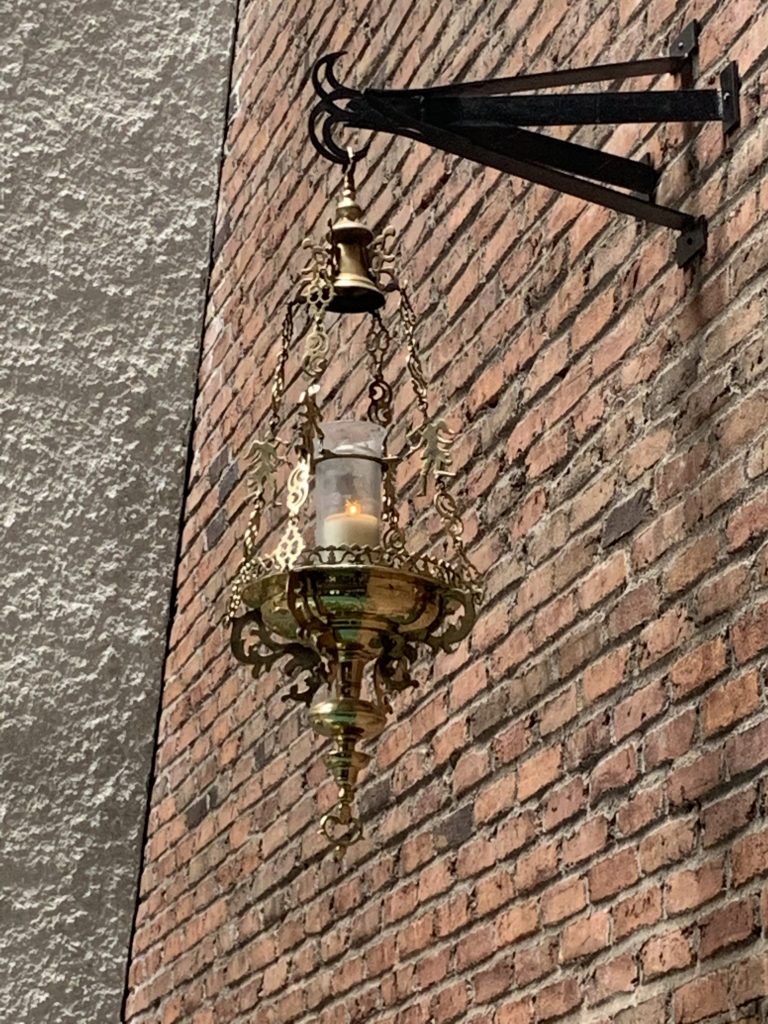
The Sanctuary Lamb burns all the time (as a reminder that Jesus is present, in the form of bread (communion), inside the tabernacle. Every Catholic Church has a Sanctuary Candle burning in it, and it is usually close to the tabernacle.
The Baptismal Font
The Baptismal Font is a symbol of the living waters of Baptism. (That’s why the water is always moving and bubbling.) The location of the Baptismal Font in our church is very unique and symbolic. The Baptismal Font is located at the entrance of the church because baptism is the first sacrament which begins our Christian life as members of the church.
The Easter Candle
The Easter Candle, or Paschal Candle, is a tall candle usually located next to the Baptismal Font. The Easter Candle is a symbol of the Risen Christ. The Easter Candle is the first light that fills the darkened church at the Easter Vigil Mass on Holy Saturday.
Symbolically, the darkened church represents a world without the presence of Christ who was crucified and died on Good Friday. Holy Saturday night, after the Blessing of the New Fire, the Easter Candle is lit and carried in procession through the darkened church. It is from the spreading of its flame, to all in the congregation, that the church is filled with Christ’s Light once again. The Easter Candle is also placed at the foot of a casket at a funeral and is used during Baptisms. The Easter Candle remains in the Sanctuary during the entire Easter Season (50 days) and after the last Mass on Pentecost Sunday the Easter Candle is brought back to the vestibule signifying that Easter Season is over.
Communion Stations

The communion stations in our church are the four stone structures at the foot of the Sanctuary, which we approach to receive communion. Carved into each communion station are loaves of bread and fish. These symbols, referring to the multiplication of the loaves and fish in the Gospel, symbolize the Eucharist. Since, logistically, everyone cannot receive communion from the Altar, the communion stations also represent the table of the Last Supper.
Pulpit or Ambo

The pulpit, or ambo as it is sometimes referred to as, is where the Sacred Scriptures are read. In our church the pulpit has a sculpture of a dove facing down on the front of it.
The dove is a symbol of the Holy Spirit who descended upon the Apostles to enlighten them to go forth and preach the Good News of Salvation. The dove is facing down on the pulpit to represent the Holy Spirit descending down on His people through the Scripture readings at Mass.
Stations of the Cross
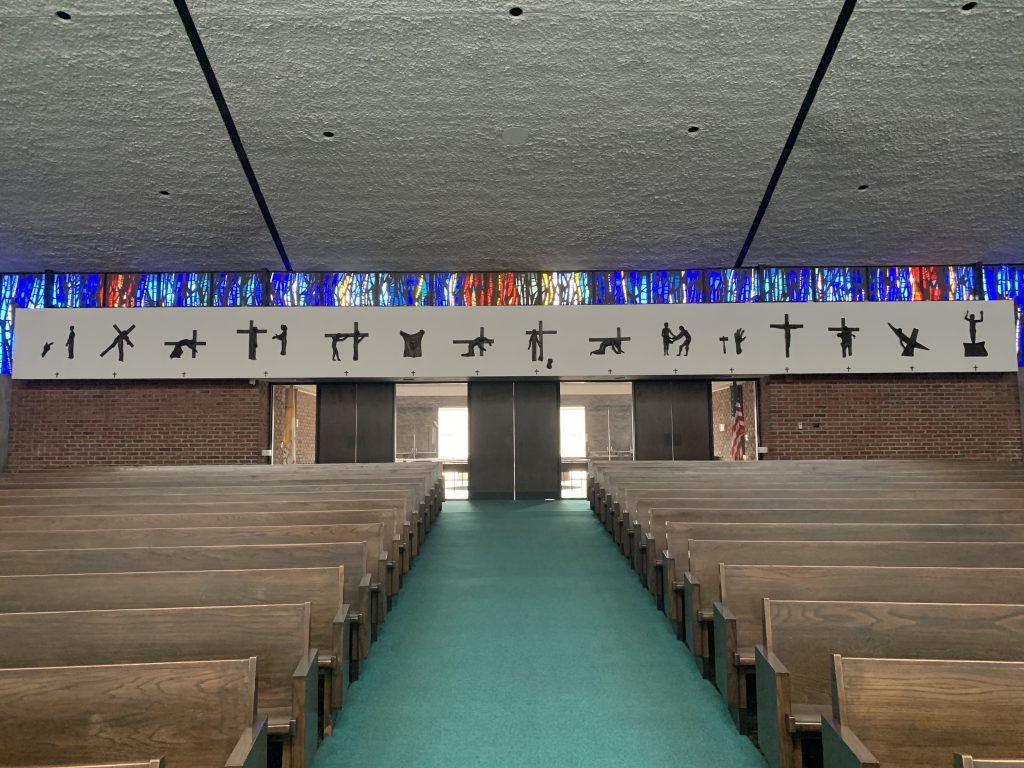
The Stations of the Cross are sculptures that depict certain scenes of the Passion of Christ, each corresponding to a particular incident that occurred on the road to Calvary. Typically there are fourteen “stations,” but our church is unique in that it has fifteen; the fifteenth being the resurrection of Jesus.
